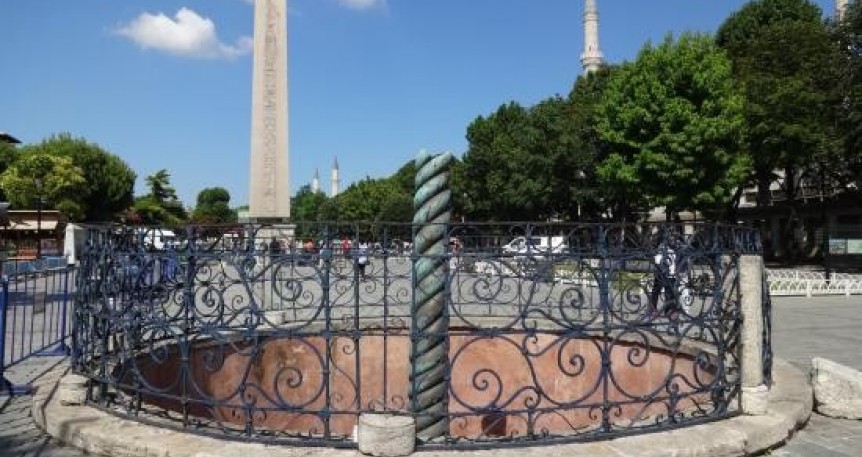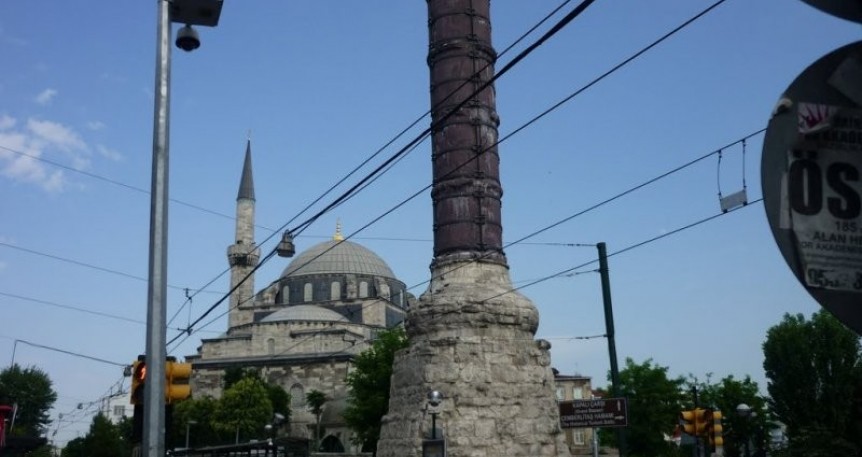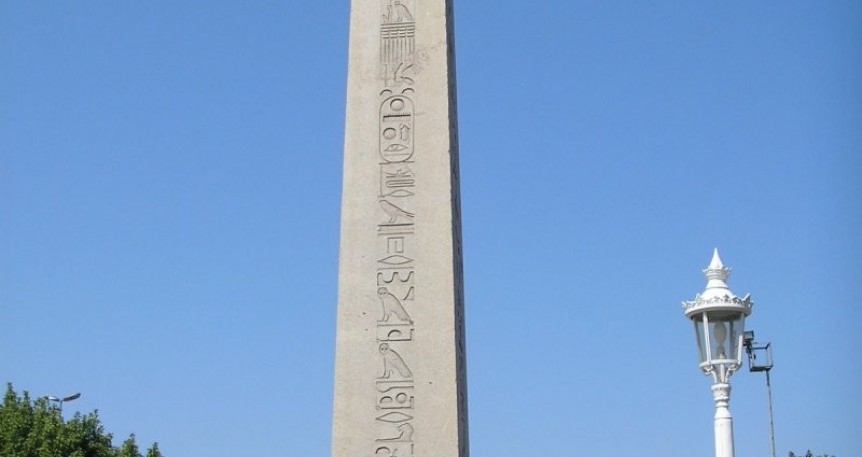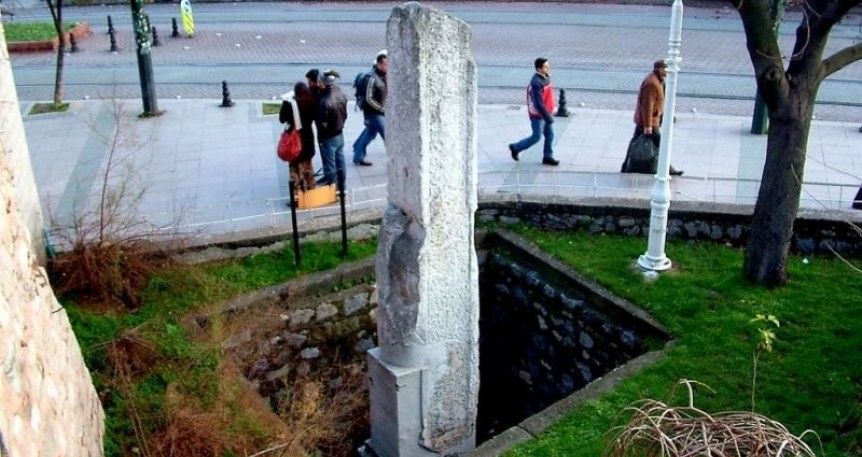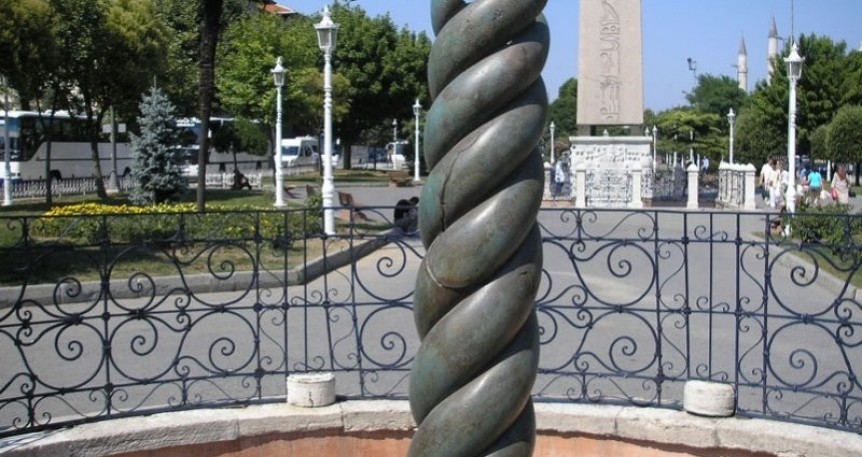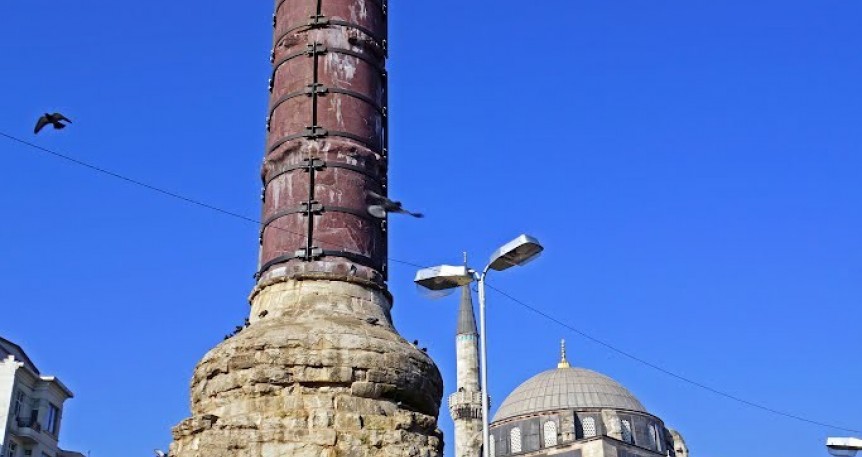The Column of Constantine
The Column of Constantine is one of the most important examples of Roman art in the world.
Goths Column
The column stands at the outer courtyard of Topkapi Palace, in Gulhane Park, and surrounded by trees. It's one of the oldest columns from the Roman period, which was erected probably in the 3rd or 4th centuries AD, carved from a single piece of stone and decorated with a Corinth style capital containing an eagle relief. Because of the inscriptions mentioning the victory over the Goths, it's called as Goths Column. The column is 15 meters high and rests on a small base.
Million Stone
The Milion, was a mile-marker monument erected in the early 4th century AD in Constantinople (modern-day Istanbul, Turkey). It was the starting-place for measurement of distances for all the roads leading to the cities of the Byzantine Empire and had the same function as the Milliarium Aureum of Rome. The domed building of the Milion rested on 4 large arches, and it was expanded and decorated with several statues and paintings. It had survived intact, following the Ottoman conquest of Constantinople (1453), for about the next 50 years, but disappeared at the start of the 16th century.
Column of Theodosius
The Column of Theodosius was a monumental column located in the Forum of Theodosius in Constantinople built during the reign of Theodosius I (379-395). It was modeled on the columns of Trajan and Marcus Aurelius in Rome, with spiral reliefs, an internal spiral staircase and an imperial statue crowning it. The column was located on high ground overlooking Propontis, it was visible to anyone approaching Constantinople by sea. Furthermore it was located on the Mese, the main street of Constantinople, placing it at the heart of the city. It was also part of the attempt to rival the city of Rome during this period.
Serpent Column
When Constantine the Great had expanded Byzantium and had renamed it Constantinople, he started to decorate the city, and ordered the removal of several ancient works of art and monuments. One of these was the Serpents' Column that had, until then, been in Delphi, and was now placed on the spina, the longitudional barrier in the center of the hippodrome. Here the column still stands between the other monuments: the Obelisk of Theodosius, the Porphyrius monuments, and the Obelisk of Constantine Porphyrogenitus.

